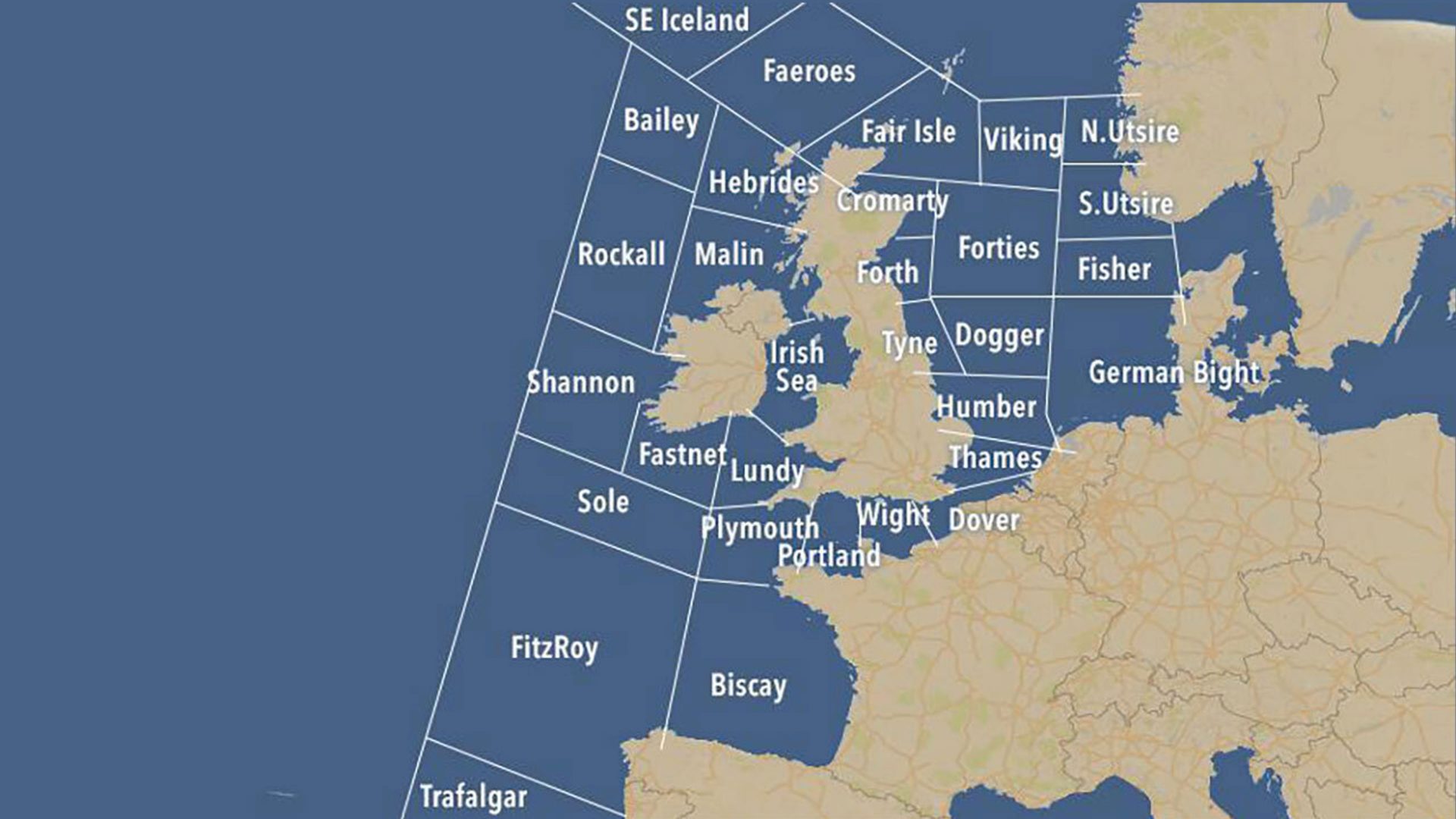1. The Shipping Forecast was first issued on August 24, 1867. Since no one had yet got around to inventing radio, for its first few decades it was issued by telegram.
2. It was in large part the creation of Robert FitzRoy, a sometime hydrographer, naval vice-admiral, New Zealand governor and captain of the HMS Beagle (on the voyage during which Charles Darwin would formulate his theory of natural selection, no less). During his years as a meteorologist for the Board of Trade, FitzRoy effectively created what would become the Met Office, setting up a network of weather stations to report to London and inventing not merely the science of weather forecasting but also the word “forecast”. Alas, he didn’t live to grasp the scale of his own legacy: he died by suicide in April 1865.
3. The forecast FitzRoy helped to create has been broadcast by radio, in various forms, since 1911, with just three gaps. Two covered world wars, to ensure the Met Office was not accidentally helping the enemy. The third came on Friday May 30, 2014, when someone forgot to flick a switch.
4. Today it is broadcast twice on BBC Radio 4 every day, at roughly 12-hour intervals, with a third on weekends. (There used to be four each day on longwave, but then the BBC switched it off.) On December 18, 1993, for one night only, it was also broadcast on TV: on BBC Two, for Arena Radio Night. It was such a hit that they never did it again.
5. Each broadcast follows very strict rules, including a maximum wordcount and a standard order: gale warnings, general synopsis, area forecasts (wind, strength, precipitation, visibility), coastal weather stations, and finally inshore waters. The names of the latter – 17 of them, covering the areas closest to land – have simple geographic names like “Cape Wrath to Rattray Head” or “Isle of Man”, which is why you forget they exist.
6. Times are spelt out (“two-three-double-O”), and barometric pressures pronounced as whole numbers (“a thousand and five”), to ensure they can’t be mixed up even if your reception is terrible. In the same way, wind speeds are given on the Beaufort Scale, with the scarier possibilities (from Gale 8 to Violent Storm 11) adding names for emphasis. The scariest wind speed of all – “Hurricane force 12” – adds a whole extra word, too.
7. The forecast’s ostensibly strange vocabulary actually conveys highly specific meanings. “Imminent” means within six hours, “soon” is six to 12, “later” 12 to 24. In the visibility section, “good”, “moderate”, “poor” and “fog” all mean you can see up to defined distances. Wind direction can be “veering” (changing in a clockwise direction) or “backing” (the reverse).
8. Celebrities who have read the forecast include Stephen Fry, Alan Bennett and – perhaps surprisingly, since it needs to be read in a calm, gentle, steady voice that places equal emphasis on every piece of information, just in case it matters to someone – John Prescott. The forecast has also been used in music by acts including Blur, Radiohead and the Prodigy.
9. Of the 31 named regions, six (Forth, Tyne, Humber, Thames, Shannon, and Cromarty, an arm of the Moray Firth) are named for river estuaries. Five (Viking, Dogger, Fisher, Sole, and Bailey) are areas of raised sea floor. Two (Dover and Plymouth) are ports.
10. Three more are named for headlands: Trafalgar (after Cape Trafalgar, Andalucía; only included in the 00:48hrs broadcast unless there are gales); Malin (Malin Head, the northernmost point of mainland Ireland); and Portland (the Isle of Portland, a “tied island” protruding from southern Dorset).
11. Eight are named for islands (North Utsire and South Utsire, both after a Norwegian island named, well, Utsire; plus Wight, Lundy, Rockall, Fair Isle, Iceland and Fastnet, after Fastnet Rock, a rather bleak chunk of slate in the Atlantic that counts as the southernmost point of Ireland). Another two (Hebrides and Faroes) are named for archipelagos.
12. Of the four named for water, two – Irish Sea and Biscay – are self-explanatory. A “bight” is a curve in a coastline, so German Bight is the area of the North Sea (formerly the German Ocean) bounded by the German and Danish coasts. Forties is named for the Long Forties: a region where the sea is consistently roughly 40 fathoms (73 metres) deep, quite shallow for the North Sea, which is generally around 95 metres deep. (There’s also a Broad Fourteens: that, alas, doesn’t get its own shipping forecast area, but is split between Humber, Thames and German Bight.)
13. Last but not least there’s one shipping forecast area named after a person. In 2002 the Met Office decided to rename Finisterre – after a peninsula on the west coast of Galicia, Spain – to prevent confusion with an area of the same name in METAREA II (a French forecast that covers a huge stretch of the eastern Atlantic as far south as the Gulf of Guinea). The name it chose was, of course, FitzRoy.
Suggested Reading


Nerd’s Eye View: 15 things you need to know about state visits
1867
First shipping forecast issued by telegram
1911
First radio broadcast
30
Number of shipping forecast regions (31 in 00:48 forecast)
GOOD
Visibility greater than 5 nautical miles (9.3km)
MODERATE
Visibility of 2-5 nautical miles
(3.7-9.3km)
POOR
Visibility of between 1,000m and 2 nautical miles (3.7km)




